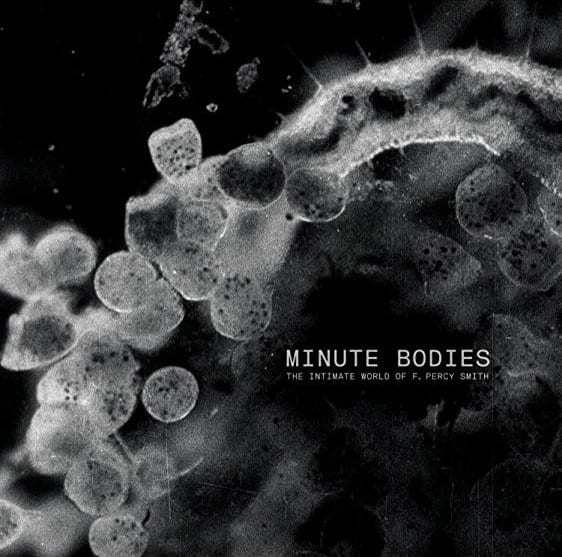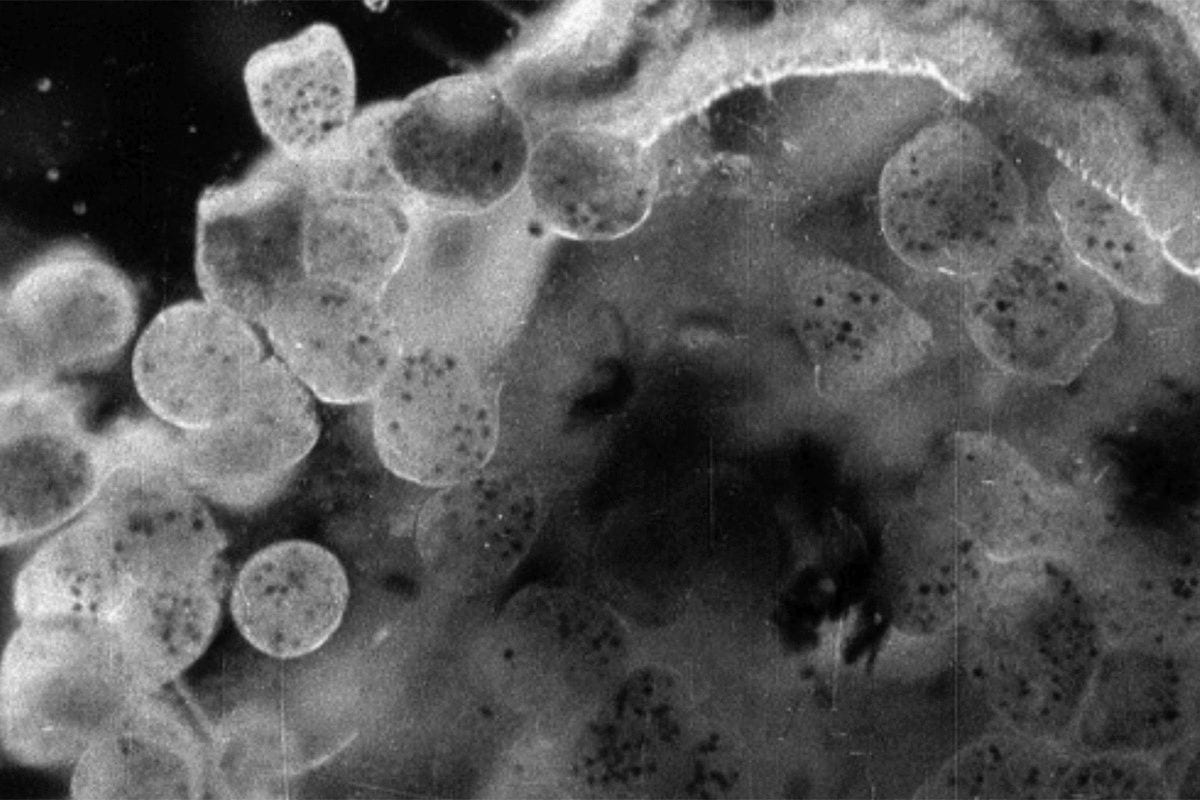
One artist pays tribute to another, fusing their individual sensibilities through a sea change into something rich and strange in Minute Bodies: The Intimate World of F. Percy Smith.
The artist paying tribute is Stuart A. Staples, best known as the singer and co-founder of the English musical group Tindersticks, whose music I think of as a kind of gothic ambient folk-lounge, heavy on guitar and gravelly vocals. I’m being reductive, but my favorite Tindersticks moment is their collaboration with actor Isabella Rossellini on the 1993 song, “A Marriage Made in Heaven”, about a weary, bitter argument. The band has also provided soundtracks for several films of Claire Denis, and the most striking of these to my mind is their dark score for the vampire/addiction drama Trouble Every Day (2001). These projects allow them to stretch their penchant for arty chamber ambience.
Tindersticks provides the elegant ambient score for Minute Bodies, with a few forays into jazz instrumentation and the abstract vocals of Christine Ott, and Staples has directed and edited the 53-minute project. His subject and raw material: 23 short films made by F. Percy Smith (1880-1945), a pioneering amateur naturalist and filmmaker who designed his own cameras for the purpose of shooting educational science films featuring time-lapse photography, micro-photography, and animation. Another way to put it: Smith created a cinema of revelation.
As an amateur naturalist working at home, Smith followed in the footsteps of such celebrated mavericks as France’s Jean-Henri Fabre, who wrote brilliantly on his experiments in the insect world. Fabre died in 1915 and Smith would surely have been aware of his work. As a man excited by the possibilities of cinema to spread the gospel of nature, Smith in turn anticipated the work of Jean Painlevé, whose pioneering photography of underwater life also intended to edify and entrance the viewer, and some of whose films are gathered in the 2009 Criterion DVD Science is Fiction: 23 Films by Jean Painlevé.
Painlevé, of course, foreshadowed Jacques Cousteau and David Attenborough and even Walt Disney’s True-Life Adventures. James Algar’s Secrets of Life (1956) is a relevant title among the Disneys, for that was also the title of Smith’s series of Gaumont-British films. Their tradition leads directly to films like Claude Nuridsany and Marie Pérennou’s Microcosmos (1996).
Smith’s many films explain what they’re showing clearly, but it’s not Staples’ intention to present an informational film. Rather, he presents a collage of images with an accent on beauty and dreamlike art, the surrealism of scientific fact. Since we live in the post-Smith world in which a thousand documentaries and entire informational TV series are available with the techniques he pioneered, we can easily recognize many images.
Here are plants growing, here’s a bee pollinating a flower, here are single-celled organisms, here are floating tadpoles, here’s blood rushing through veins, here’s mold expanding like crystal, here’s an ancient Lovecraftian monster from outer space absorbing all in a liquid nightmare. Okay, we don’t always recognize what we see, and the utter strangeness, ickiness, and weirdly erotic writhing and throbbing is part of the sense of alien whimsy and wonder sometimes captured. Indeed, some of these images are beyond the imagination of the most twisted CGI artist.
One beautiful and possibly disturbing aspect of Smith’s subjects is their divine unconcern with human behavior or existence. They share the planet unnoticed, going about their business under our self-absorbed noses until a film calls it to our arrested attention. Microscopic life and its meticulous processes remind us that we’re not at the center of the universe, only at the center of ourselves. Thus, the films become not only revelatory and surreal (in the sense of “super-real”) but possibly transcendent.
Smith’s world is “intimate” not only because he revealed nature’s “secrets”, especially those involving plant and animal reproduction (for which he sometimes resorted to animation, both drawn and stop-motion), but because films made in his home with his own devices reveal his personal interests and obsessions. We finally glimpse footage of the man himself at the end, playing with mice and letting them crawl all over him as he smiles. There’s some mystery about this quietly conscientious artist and pioneer who committed suicide near the end of WWII, and the film can’t penetrate it as easily as he revealed the hidden life of plants.
Four of Smith’s complete films are included as extras: The Birth of a Flower (1910), Nature’s Double Lifers–Ferns and Fronds (1932), He Would A-Wooing Go (1936), and Lupins (1936). The first film is silent and tinted in various shades (Staples’ film presents all in black and white), presenting several exercises in time-lapse blooms. The later films are narrated. The narrator of the film about ferns makes a point of stating that even human growth is based on the same process of microscopic cell division, thus linking the imagery to our own bodies and planting the seed of life’s continuum. He Would A-Wooing Go presents the life cycle of the frog with some saucy humor, while Lupins uses animated stop-motion bees.
This British Film Institute release of 2016 is now available as a Blu-ray thanks to Icarus Films, which specializes in documentaries. It’s also further proof, if any is necessary, that silent cinema isn’t dead, for Staples’ project amounts to a newly constructed silent feature showcasing the harmony of image and music.

